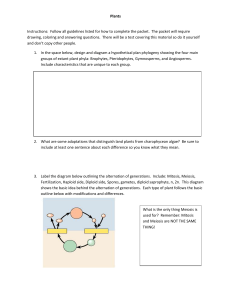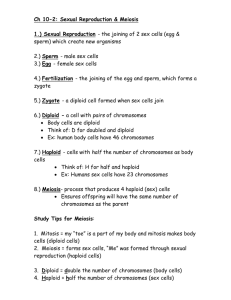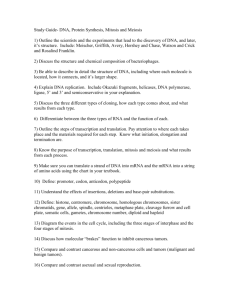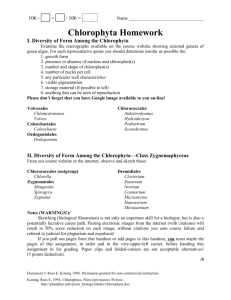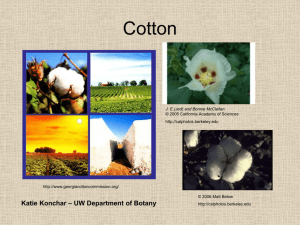EUKARYOTIC LIFE CYCLES
advertisement
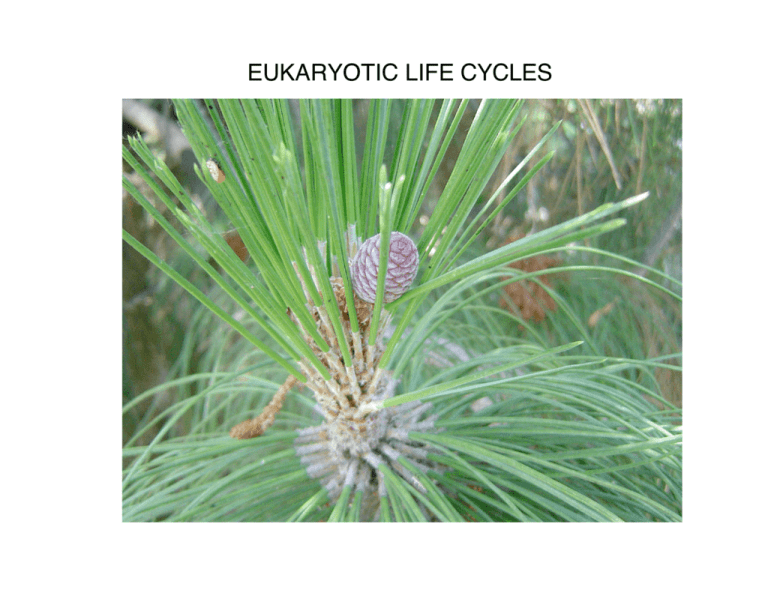
EUKARYOTIC LIFE CYCLES The simplest life cycles are asexual: prokaryotic (bacterial, archaeal) and eukaryotic (protist, fungal) cells divide and separate Bacillus cereus Saccharomyces cerevisiae The asexual “life cycle diagram” of a fungus might look like this: Sexual life cycles involve gamete fusion and meiosis to form gametes haploid and diploid phases, but the details differ or “gametic” Meiosis is a process for reducing chromosome number from 2n to 1n ! Diploid nucleus ! Two chromosomes of each type ! One from each gamete in fertilization ! “Homologous chromosomes” ! Meiosis separates homologous chromosomes ! Result: one of each type of chromosome meiosis Diploid karyotype fertilization Haploid karyotype Sexual life cycles involve gamete fusion and meiosis to form gametes haploid and diploid phases, but the details differ or “zygotic” Sexual life cycles involve gamete fusion and meiosis to form gametes haploid and diploid phases, but the details differ “sporic” life cycle A moss spends most of its life as a haploid organism (“gametophyte”): the diploid stage (“sporophyte”) is multicellular but dependent A fern has independent multicellular haploid and diploid stages, but the part you normally see and that lives longest is the diploid stage A pine tree is a diploid organism, but it produces male and female multicellular haploid gametophytes. The female gametophyte produces an egg. The pollen grain is dormant until it germinates at the “micropylar” chamber and grows to the egg to deposit a sperm nucleus. Summary An asexual life cycle involves cells dividing solely by mitosis (with some differentiation of the daughter cells possible); cells can be either haploid or diploid A sexual life cycle involves alternating fertilization and meiosis events, resulting in alternating haploid and diploid phases Animals have a diplontic life cycle; fungi have a haplontic life cycle; plants have multicellular diploid and haploid forms Next: the life cycle of a flowering plant




